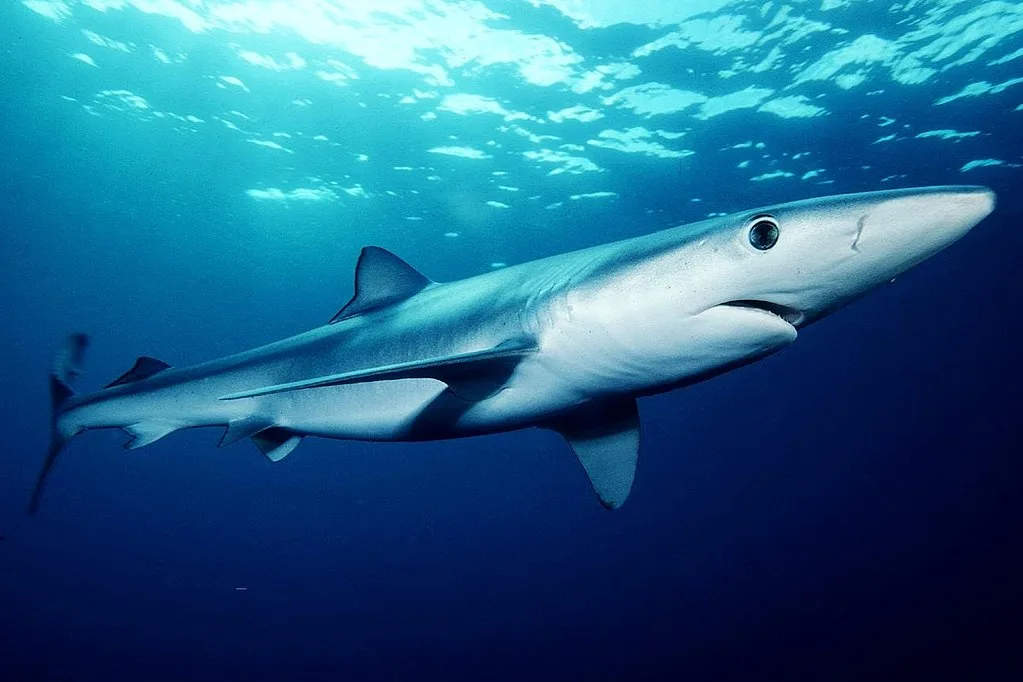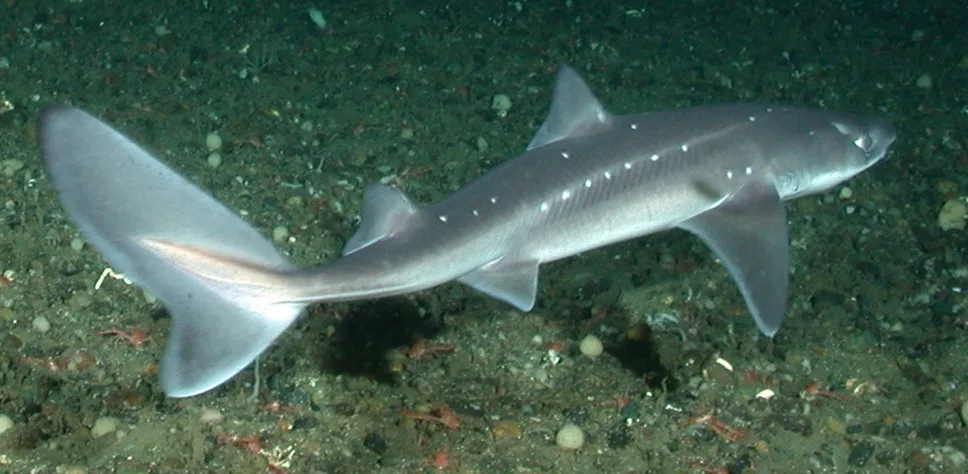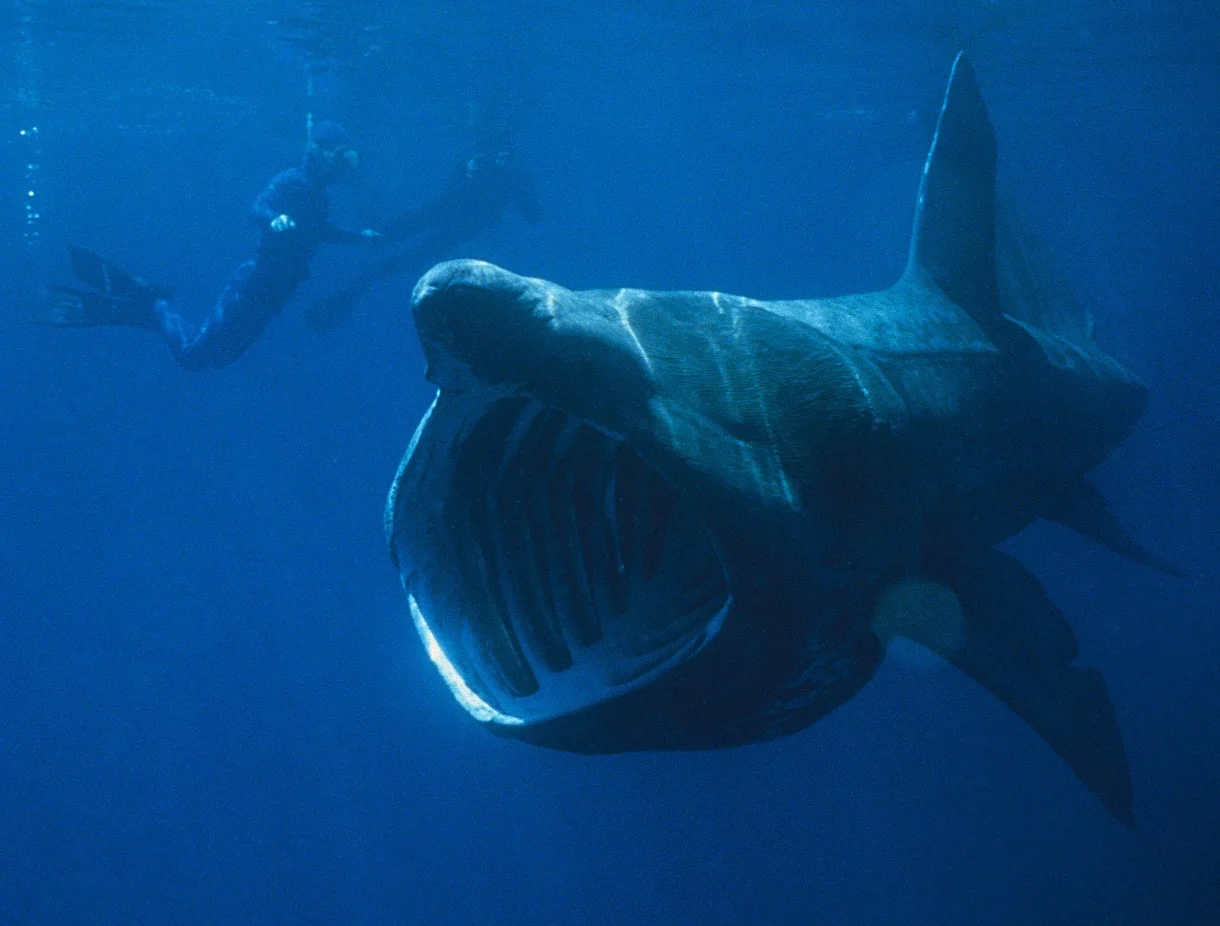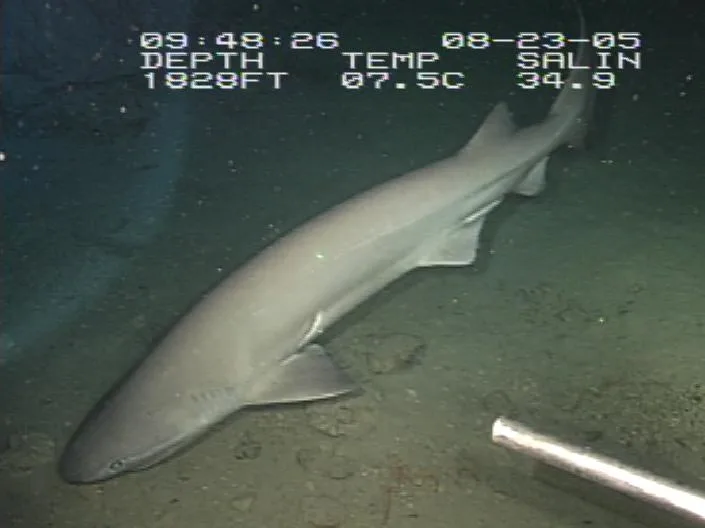
Meet our 10 favourite sharks that prowl off Canada's coasts
When your country has the longest coastline in the world, it's bound to have a few visitors.
Canada's waters are definitely not cold enough to deter the ocean's top predator. In fact, more than two dozen shark species frequent the seas off of our nation's coasts. Below are the ones we're most fascinated by.
PORBEAGLE SHARK
When these peculiarly named sharks ply the waters off of North America, their range includes more Canadian waters than U.S. waters, being found in all of Atlantic Canada up to southern Labrador. And no wonder: They are one of the most cold-tolerant shark species, preferring waters of 18°C or colder.
Despite occasionally being found at or near the surface, there are no documented attacks on humans by this species, but humanity hasn't returned the favour: Its numbers are greatly diminished, as they often end up as bycatch among fisheries. They are considered endangered in Canadian waters.
BLUE SHARK

Credit: Mark Conlin/NMFS/Wikimedia Commons
This species -- known for the beautiful blue hue from which it derives its name -- is one of the most widely distributed shark species in the world, though in Canada you are most likely to see if off the B.C. coast and around southern waters of the Maritimes and Newfoundland.
They grow almost four metres in length, and like porbeagles, are seriously impacted by fishing activities, with one estimate suggesting 35 per cent of individuals will wind up as bycatch.
SPINY DOGFISH

Credit: NOAA/Wikimedia Commons
Dogfish are generally the smallest of shark species, and the spiny dogfish, which mostly lives relatively close to Canadian shores, grows not much more than a metre in length.
They're a social shark species, congregating in groups of hundreds or thousands. Their name derives their venomous dorsal spines.
Their cousin, the black dogfish, can also be found in Canadian waters from time to time.
GREENLAND SHARKS
Here's another cold water-loving species, quite comfortable in Canada's eastern Arctic and North Atlantic waters.
If you've seen this species in the news now and then in the last few years, it's due to occasional research suggesting the species can live up to 400 years or more, though Canada's Department of Fisheries and Oceans is more circumspect about Greenland sharks' supposed lifespan.
Greenland sharks have a North Pacific-dwelling cousin, the similarly-sized Pacific sleeper shark, which also lives in colder, northern waters, though there is no information on its lifespan.
BASKING SHARKS

Image source: Chris Gotschalk/Wikimedia
Basking sharks are enormous, growing up to 10 metres in length, the second largest shark species in the ocean. You're likeliest to find them in Canada's Atlantic waters, though they have recently been spotted reclaiming their old digs on the West Coast.
If you do spot one, though, not to worry: The behemoths are completely harmless filter feeders, and couldn't eat you even if they wanted to.
BLUNTNOSE SIXFILL SHARK

Image: NOAA/Wikimedia Commons
This fellow, a West Coast-exclusive when in Canadian waters, is the largest predatory shark in the Canadian Pacific, growing up to 4.8 metres.
But its physical peculiarities are what make it stand out: As the name says, it features six gill slits on either side (most sharks have no more than five), and it only has one dorsal fin.
SHORTFIN MAKO

Image source: Patrick Doll/Wikimedia Commons.
This species wanders into Canadian waters seasonally (you're likeliest to see it off the East Coast), and if you do catch a glimpse of it, you'll definitely remember it.
They're one of the fastest species of shark (reaching speeds up to 35 km/h), and apparently they're show-offs as well, able to leap as high as six metres out of the water.
COMMON THRESHER SHARK

Image source: Paul E. Ester/Wikimedia Commons.
The common thresher shark prefers temperate seas, but is no stranger to Canada's waters, though you're likelier to see them off the Atlantic coast.
Obviously, its most distinct feature is its tail, which makes up as much as half its total length, making it popular among shark fishermen.
SALMON SHARK

Image: Cherisse Du Preez/Fisheries and Oceans Canada
Another west-coast exclusive, the salmon shark is named for its apparent preference for the fish of the same name. They're about the same size as great white sharks, though darker and much less well known.
They've been in the news relatively recently, after a Fisheries and Oceans Canada crew spotted one rubbing up against a log covered in barnacles, apparently in an effort to scrape parasites off of its hide:
GREAT WHITE SHARK
Arguably the most famous and feared of all sharks, the great white is found in most of the ocean, though rarely in Canada. Still, they do wander into Canadian waters from time to time: DFO estimates they're sighted or caught every two or three years.
Still, there've been a few breakthroughs in recent years. In September 2018, scientists managed to tag a great white in Canadian waters for the first time, and more tracking efforts are planned for 2019.











